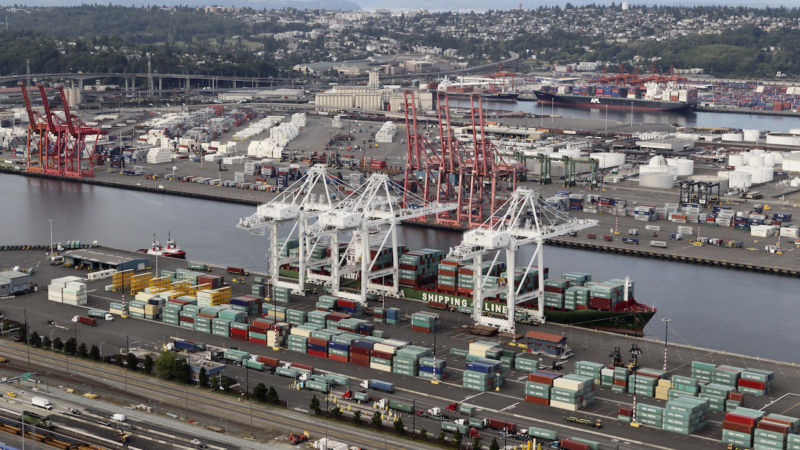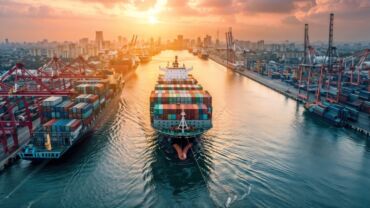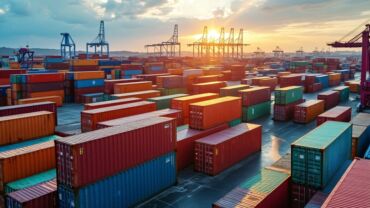Trade wars, tariffs, retaliation. Protracted treaty negotiations. WTO rulings. Regulatory and policy changes. Brexit. It is arguably the most frenetic, uncertain, and risky period ever for people who manage supply chains, importing and exporting, and customs and trade compliance at multinational corporations.
The stakes are high. The International Monetary Fund cited an “escalation of trade tensions” when it downgraded its global growth forecast in January. In companies worldwide, the C-suite and business functions from procurement to manufacturing to logistics depend on deft trade and supply chain management to underpin everything from global expansion to promises to customers.
The risk of supply chain breakdowns and compliance failures are greater when international trade managers — due to political and regulatory uncertainty — can’t reliably predict what changes are coming around the corner. There are steps they can take, however, to mitigate strategic, operational, and reputational risks and create a first-mover competitive advantage when rules, regulations, and trade agreements disrupt the status quo.
How can they be ready for anything? The key is ongoing scenario analysis and contingency planning, including:
- Monitoring regulatory proposals and trade-related political activity (including potential retaliatory tactics);
- Assessing which proposals, if implemented, could create gaps in your supply chain or adversely affect costs; and
- Establishing alternatives — sources, suppliers, and strategies — to activate if and when you need them.
Areas to explore
In response to the relentless volley of tariffs, ever-changing trade policies, and overall environment of uncertainty, leading companies are evaluating and adjusting how they move goods in order to control costs, maintain quality, and ensure operational continuity.
Here are a few areas that merit exploration:
- Identify alternative supply sources so you’re prepared to sidestep the disruption and higher costs that tariff increases cause. Given that single-source supply chains are riskier than ever, you might even vet and on-board new supply partners before they’re needed. In this way, you’ll be ready to act quickly when change requires it — while ensuring reliability and quality, minimal disruption, acceptable working conditions and environmental impact at supplier sites, and robust restricted-party screening.
- Evaluate alternate manufacturing locations. Some emerging economies are seizing the opportunity that political uncertainty has created by establishing tariff-free alternatives to higher-cost countries. Vietnam and Burma, for example, are strengthening their manufacturing capabilities to become an attractive option for companies trying to avoid Chinese tariffs.
- When considering a sourcing change to avoid new or anticipated tariffs, assess whether it will impact your company’s ability to qualify for Free Trade Agreements (FTAs) or preference programs such as the Generalized System of Preferences or African Growth and Opportunity Act.
- Assess whether there is potential to avoid duties through Free Trade Zones (FTZs) and FTAs or to recover duty expenditures through duty drawback.
- Companies that do light manufacturing should consider the impact of proposed protectionist measures (Section 232 tariff or anti-dumping duties, for example.) Will they change the classification and Country of Origin of the goods?
- Evaluate your supply chain for opportunities to avoid, reduce, or minimize costs by moving manufacturing, distribution, and storage to bonded warehouses, FTZs, or processing regimes.
An important caveat
One key to operating efficiently is scenario planning and exception-based management — using software to evaluate your company’s supply chain data and identify areas in which you might have opportunities for change or where you are not in compliance with regulations and policies. This ability to run reports, audit the information, and identify outliers saves time that can be used to strategically prepare for tomorrow’s challenges.
All of this, of course, requires time and technology to map and monitor the supply chain, create audit trails, evaluate FTA and FTZ options, review regulatory compliance, and automate filing for drawback and other programs. Trade teams burdened with manual processes and data sequestered in disparate systems struggle with day-to-day operations — and have no chance of anticipating and preparing for whatever may come next in this volatile environment.
There are a lot of trade management teams in this situation. The 2017 American Shipper Import/Export Compliance Benchmark Study found that nearly 4 in 10 companies did not have a global trade automation system. This leaves them at a competitive disadvantage and creates a huge performance gap that hits the bottom line. According to a 2017 study from the Aberdeen Group, companies with best-in-class trade management operations received perfect orders from international suppliers 89% of the time, compared with 30% for all other firms. The best-in-class companies’ trade compliance costs declined nearly 5% year-over-year, while the others saw costs rise 18.8%.
Getting ahead of the curve — in managing day-to-day operations, potential changes to the supply chain, and once-a-career chaos — improves efficiency, reduces risks of non-compliance, and bolsters a company’s competitiveness.
For more information on how to make a business case for your company to invest in global trade automation, check out the white paper, “Valuing Global Trade Automation” here.







